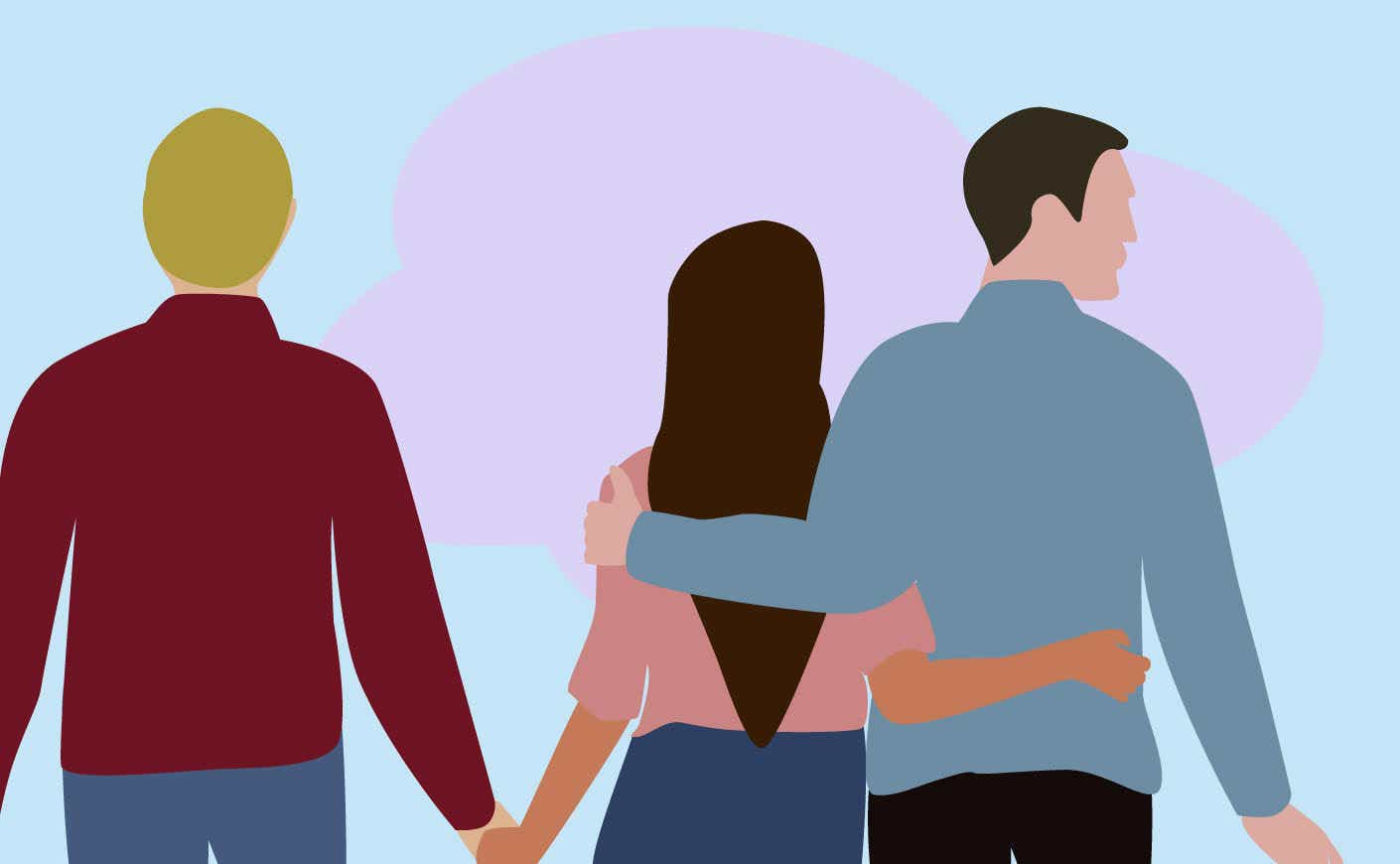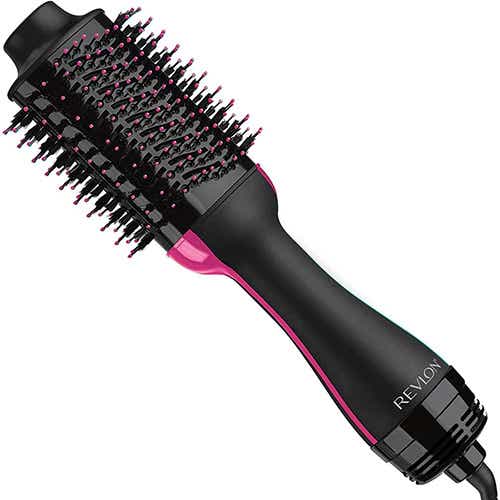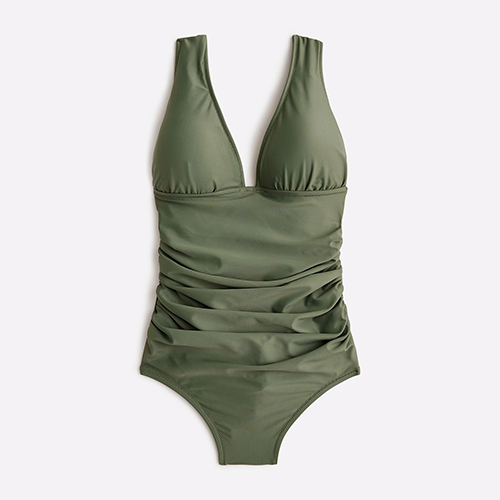Don’t knock it till you’ve tried it.
Staying faithful to your partner is a vow that has been traditionally viewed as sacred. But there’s a growing population of couples who are exploring relationships outside their marriage or partnership — with the consent of their partners. When they’re set up effectively, open relationships can be an honest, safe, and consensual way for one or both people in a relationship to explore, sexually and emotionally.
We know it sounds wild, but open relationship are becoming increasingly common: A recent poll found that 25 percent of Americans said they’re willing to try one. While people who identify as LGBTQ or who are in their 20s and 30s are most comfortable with the idea (no shock there), a whopping 12 percent of Baby Boomers are also into it. Some dating websites, like OkCupid, even offer opportunities to let people know you’re interested in non-monogamous or open relationships.
In theory, wouldn’t agreeing to an open relationship be better than stepping out without permission? Maybe you and your partner are both secretly interested in fulfilling new desires outside of your coupling. If you’ve considered expanding your horizons, the topic warrants a conversation, at the very least.
While being in an open relationship can be rewarding, it takes a lot of work. Some research indicates that open relationships have only an 8 percent success rate. “Any time a couple decides to do anything of importance in their relationship, they need to make sure that they’re creating a win-win situation for both people,” says Gabrielle Usatynski, a couples and family therapist, and founder of Power Couples Education. “This is what we call true mutuality. It’s good for me and good for you, and if it’s not good for one person, it’s not good for either, because we sink or swim together.”
When set up so that both partners feel entirely comfortable with the idea and are unafraid to raise their hand if they change their minds, open relationships can be beneficial and exciting for all parties.
Susan Wenzel, a certified sex therapist and author of A Happy Life in an Open Relationship, has been married for 10 years and in an open relationship with her partner for eight of them. She found a renewed sense of freedom and exploration by opening up her marriage. “I’ve grown so much sexually in a way that I couldn’t have grown in a monogamous relationship, because one partner cannot fulfill all my sexual and emotional needs,” she tells KCM.
We asked both of these experts how to know if an open relationship is right for you, how to bring up the conversation with your partner, and how to make one work for both of you.
So, what exactly is an open relationship?
The key distinction between open relationships and other types of non-monogamy is that there’s one couple at the center of it all. “There’s a hierarchy to open relationships,” says Wenzel. “The primary relationship is central and takes place more than any other relationship.” But the common idea is that as a couple, both or one of you will sexually or emotionally engage with someone (or even a few people) outside of your relationship. While both partners don’t have to engage, they both have to be in agreement on and aware of the situation.
Couples can create their own rules for how their open relationship will work, but forgoing the rules altogether is a recipe for disaster. “If both partners sit down and hash out every single last detail of what they’re agreeing to, and agree that if either member of the couple feels uncomfortable at any point — or that it’s an immediate no-go — those are conditions under which I think an open relationship could be feasible,” says Usatynski.
Each partner also typically has veto power, Wenzel tells us. “They can say, ‘I’m not comfortable with this person you’re dating,’ and that will influence whether you’ll see that person again or not.”
What’s the difference between open relationships and polyamory?
There’s a key distinction between the two. “You often hear polyamory used in conjunction with open relationships. It means ‘multiple loves,'” says Usatynski. “Generally, those are thought of as consenting intimate relationships with more than one partner at a time. Not everybody involved in open relationships would say they follow a hierarchy: Some practice “egalitarian polyamory,” where they feel that all relationships should have equal importance, and no relationship should take precedence over any other relationship.”
The benefits of an open relationship
Put simply, it feels good to try new things. Think about the beginning stage of any new romance — it’s not called the “honeymoon phase” for nothing. “The brain loves novelty,” says Usatynski. “We love to activate those dopamine circuits.” So if both partners are truly OK with the idea, set up a strong agreement, and have solid trust and communication, being in an open relationship can be liberating and reinvigorating.
“I’ve found ways to express myself as a bi woman who’s sexual with women, which I couldn’t have experienced without being in an open relationship,” says Wenzel. “I’ve learned that I’ll be OK no matter what. I’m not so dependent on my partner, and being in an open relationship provided me that opportunity to grow and find happiness on my own.”
Open relationships can also bring you closer to your primary partner, says Wenzel. “It won’t fix your relationship, but it can bring novelty,” she says. “You get to know your partner differently than in a monogamous relationship and you tend not to take your partner for granted because you know other people find them attractive.”
Other people are just hardwired for non-monogamy. “Some people want freedom — they want autonomy in their relationships,” says Wenzel. “It’s ingrained in them and feels natural.”
Signs an open relationship isn’t ideal for you
If you’re a naturally jealous person, being in an open relationship might be ultra-tough. “It can create an emotional crisis for people when they imagine their partner being with somebody else, and not many people want to deal with that,” says Wenzel. But that’s not to say it’s entirely impossible. “If we all grew up in a community or culture that taught us non-monogamy is OK or right, we might not be experiencing that jealousy.”
One thing opening your relationship will not help with? Fixing your marriage. “The solution is not to say, ‘Well, I feel empty, not connected to you, that you’re always angry at me, and I can’t get my needs met here, therefore I’m going to go outside and find it somewhere else,’” says Usatynski. “That’s a mistake. It will just make it worse. It’s better to get divorced and do what you want, rather than try to hold on and go outside to get your emotional or sexual needs met somewhere else.”
Wenzel agrees. “If you’re not communicating well, respecting each other, or valuing each other’s time, you’re just going to heighten those issues,” she argues. “This may not be the right tool for people who don’t want to be accountable or just want to sleep around.”
When trying an open relationship, there’s always a possibility that your partner might leave — but that’s true for any relationship, says Wenzel.
How can you bring up open relationships with your partner?
The number one rule: Don’t initiate the conversation when you’re fighting. Why? “It will be very hard for your partner to not feel like the reason you want to open up is that you’re not happy with them,” says Wenzel. And if you’ve already had an affair? Asking to see other people in a consensual way after the fact is not healthy. “It will be very hard for your partner to trust your intentions.”
“The best time to open up a relationship is when you’ve already worked on and are ready to invest in your relationship,” says Wenzel. “You will need a healthy foundation.”
How to come up with open relationship rules
“Open relationships require really strong communication,” says Wenzel. “I heard this saying that I loved: ‘Communication is lubrication to a relationship,’ meaning, the more you communicate, the more your relationship will flow with ease. If you’re seeing other people, you’ll also need to reassure your partner that you’re not leaving them and that you care about them.”
Setting mutually agreed-upon boundaries is also vital. Some questions worth addressing might include:
- What time are you coming home?
- Are we still having sex?
- Are you practicing safe sex?
- What can you (or can you not) explore with other people?
- Are we sharing details of our external relationships with each other? How much detail?
- What are we telling other partners about our own situation?
Unanimously agreeing to the answers up front is vital. “With open relationships, there are a lot of moving pieces that require couples to be on the same page,” says Wenzel. “If we don’t effectively communicate with our partner, we create space for negativity or lying.” At the same time, Wenzel says it’s important to be mindful of your partner’s desire to explore and not be too controlling.
“You don’t have to necessarily call them rules or regulations, because that can start feeling like control. They’re more like boundaries or parameters of what’s allowed when you’re venturing out,” says Wenzel. “Those can evolve as a couple continues to grow or they can become more constrained as they figure out what didn’t work.”













